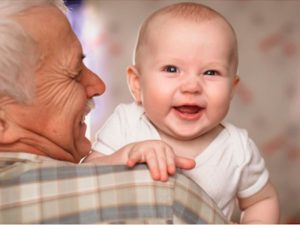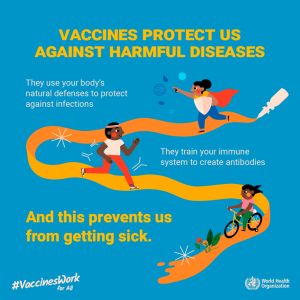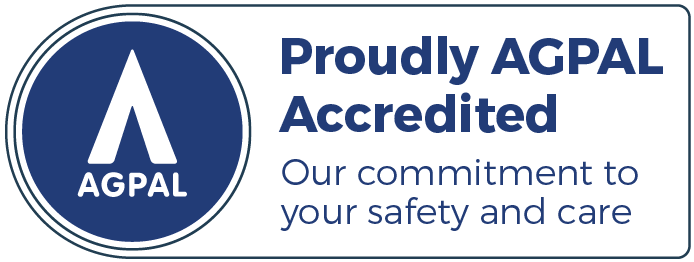Beaches, backyard cricket, BBQs and sunshine – the Aussie summer has a lot to brag about and it’s no wonder we enjoy the summer holidays so much.
However, summer does come with increasing risks.
Sun exposure, skin damage and what’s known as ‘Australia’s silent killer’, extreme heat, can all see us longing for autumn.
That last one, extreme heat, has been a hot topic recently. Pun intended.
A recent ABC news report highlighted how Australia’s silent killer can be life-threatening for some people — and not necessarily the ones you expect.
Here are a few stats:
- 2023 was the world’s hottest year on record
- Heatwaves are already Australia’s deadliest natural hazard (hence the above)
- When your core temperature gets to about 41C, your body essentially starts to cook from the inside
- Even the La Niña years of today are hotter than the El Niño years of 50 years ago
FYI: In Australia, La Niña years tend to see cooler than average maximum temperatures and El Niño summers tend to be warmer and associated with both an increase in individual extreme hot days and multi-day warm spells.
The 2023/24 summer is an El Niño event in Australia.
But you can still enjoy the summer and minimise the risks. Here’s how.
Extreme heat
In Australia, heatwaves usually range from 37°C to 42°C. According to the Australian Climate Service, A heatwave occurs when unusually high maximum and minimum temperatures persist for at least 3 days at a specific location.
Why extreme heat is so serious
Extreme heat can cause serious problems for your health as it puts a strain on your body’s ability to regulate temperature.
When external temperatures rise in extreme heat, the body’s cooling mechanisms can become overwhelmed, leading to various health risks.
Here are some reasons why extreme heat is serious to health:
Heat exhaustion
Symptoms include heavy sweating, weakness, dizziness, nausea and a rapid pulse. If not addressed promptly, heat exhaustion can progress to heatstroke which is much worse.
Heatstroke
This is a life-threatening condition where the body’s core body temperature rises to dangerous levels. Symptoms include confusion, loss of consciousness, seizures and the inability to sweat. Heatstroke requires immediate medical attention.
It happens because your body redirects warm blood to your skin to try to cool it down, but too much of this can reduce blood and oxygen from vital organs, in turn leading to serious health problems.
This transition of warmer blood also causes your heart to work much harder.
Dehydration
This can cause fatigue, headaches, dizziness and lead to heat-related illnesses.
Dehydration can cause an increased heart rate as your body attempts to compensate for the reduced blood volume. Your blood contains water, so removing some of that water means your blood gets thicker, also causing problems for organs, including your brain and thinking/reasoning ability.
How to minimise extreme heat
There are a few things you can do to reduce the risks.
Cooling methods at home
Take steps to cool yourself down, such as applying cold compresses or wet cloths to your forehead, neck and wrists. Taking cool showers can also be effective. Turn on fans or air conditioning, and if you’re concerned about power bills for A/C, extreme heat can be far more expensive on your body.
A ceiling fan uses around 20 times less than a split system air conditioner and up to 100 times less than ducted air con.
Seek shade
Whenever possible, stay in the shade to avoid direct exposure to the sun. If you’re outdoors, try to organise activities for the early morning or late evening when temperatures are cooler.
Know what to drink (and what NOT to drink)
Best to worst beverages to drink in extreme heat:
1. BEST. Water: Pure, plain water is the best choice for hydration. It is easily absorbed by the body.
2. Cold herbal tea: Herbal teas without caffeine are good for hydration. They are generally calorie-free too.
3. Coconut water: Coconut water is a natural electrolyte-rich beverage that can help with hydration.
4. Electrolyte drinks: Sports drinks or electrolyte beverages can be useful in situations where there’s a need to replace electrolytes, such as after intense physical activity. However, they often contain added sugars and calories so water is a better choice especially if you haven’t been doing physical activity on a hot day.
5. Milk: Milk contains water and provides essential nutrients like calcium and vitamin D.
6. Fruit juice: While fruit juices can provide some hydration, they often contain added sugars. Opt for water over these on a hot day.
7. Caffeinated beverages: Caffeine has a mild diuretic effect, which means it increases urine production. However, the overall impact on hydration is still positive unless consumed excessively.
8. Soft drinks: These are typically high in sugar, artificial sweeteners and caffeine. Due to their diuretic effects and minimal nutritional value, drink them sparingly and not for hydration in extreme heat.
9. WORST. Alcohol: Alcohol is dehydrating as it increases urine production. Alcoholic drinks are not a good idea for hydrating yourself in extreme heat. Wine and sugary cocktails come in right at the bottom of the list.
Sun exposure
You’ve no doubt touched a hot car after it’s been parked in the sun for a while on a hot day, or perhaps walked barefoot on hot sand or asphalt.
Sun damaged paint is also common, for example white chalky paint on an old car’s bonnet or roof or faded paint on buildings and signs.
If sun exposure can destroy paint and make surfaces too hot to touch, imagine what it’s doing to your skin.
Why sun exposure is so serious
It’s the UV radiation that causes the most problems. UV rays, which are not blocked out by clouds or necessarily get worse in hot weather, can cause skin cancer.
Excessive sun exposure also causes premature ageing and a host of other concerns:
Eye damage
UV radiation can lead to cataracts and increase the risk of developing age-related macular degeneration. Make sure you wear good quality sunglasses when you’re outside.
Dehydration
We already mentioned how serious this can be. Sun exposure, especially in hot weather, can lead to dehydration.
DNA damage
UV radiation can damage the DNA in skin cells, potentially leading to mutations that increase the risk of skin cancers.
Sunburn
Almost every Aussie experiences sunburn at some point in their life, and it certainly can lead to skin issues.
Common question: Can you get sunburnt through glass?
Yes, you can get burnt through glass, but it does significantly reduce the severity, even more if it’s tinted.
Generally speaking, sunburn comes in three levels of severity:
Mild
- Symptoms: Redness, tenderness, slight swelling of the affected skin.
- Onset: Typically occurs several hours after sun exposure, peaking within 24 hours.
- Treatment: Cool compresses, aloe vera gel, over-the-counter pain relievers.
Moderate
- Symptoms: More pronounced redness, increased tenderness, swelling and peeling.
- Onset: Redness intensifies within 24 hours, and blisters/peeling may appear within a day or two.
- Treatment: Cool compresses, aloe vera, over-the-counter pain relievers and avoiding further sun exposure. May require professional help.
Severe
- Symptoms: Intense redness, severe pain, swelling, extensive blistering/peeling, nausea, headache, fever and dizziness.
- Onset: Symptoms may develop rapidly and you may feel unwell overall.
- Treatment: Medical attention is needed.
It can be hard to know where your sunburn fits in and if it’s serious. If you get sunburnt, don’t leave any chances and get in touch with us today.
How to minimise sun damage to your skin
Know when to use protection and what kind
It can be tricky to know what kind of sun protection you might need on any given day, especially in cooler weather that may have a high UV index, something very common at a windy beach.
Here’s a great resource from MumsWhoThink:

Note that wearing sunscreen is recommended everyday no matter the UV index.
Get a skin check
Did you know that early detection saves lives when it comes to diagnosing skin cancer.
Skin checks allow doctors to ensure your skin isn’t hiding anything suspicious, and if it is, treat it quickly.
This early detection dramatically increases the effectiveness of treatment, while reducing costs, scarring and healing time.
If you haven’t had a skin check in the last 6-12 months, get in touch with us today.
A skin check should be part of your healthcare routine, no matter your complexion or level of sun exposure.
Summing up
Enjoying summer is something all Aussies are lucky enough to do, however, taking precautions to ensure enjoyment is just that – enjoyment – is necessary.
Are there any changes you can make to your plans on a hot day? How about bolstering your sun protection when going outside?
One of the first steps in ensuring your health over summer is a skin check or mole check. All medical professionals recommend these simple non-invasive, painless procedures.
Should your summer months be raising a few health concerns, we’re here to help.












